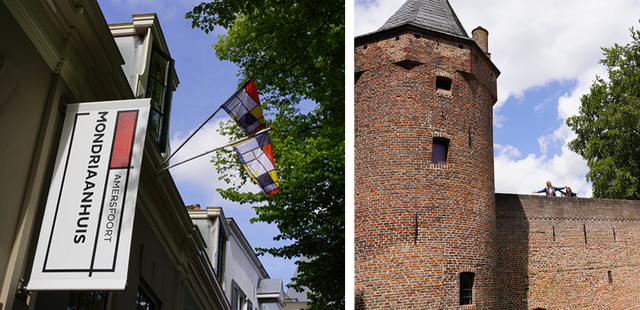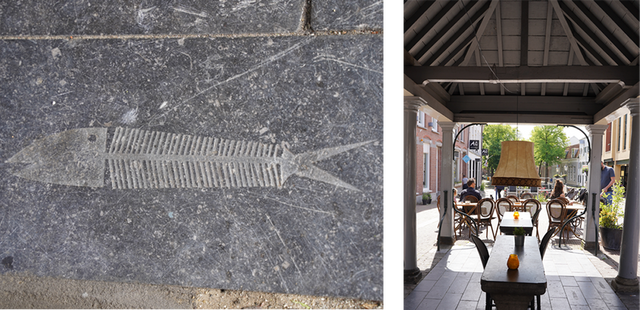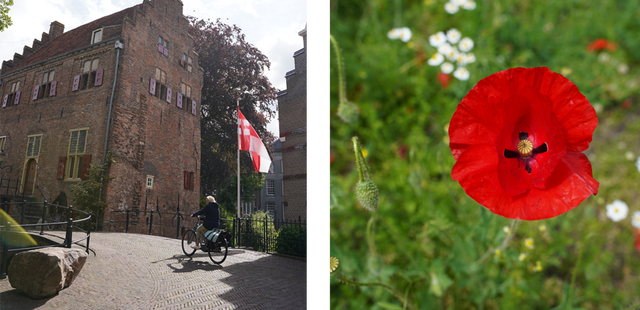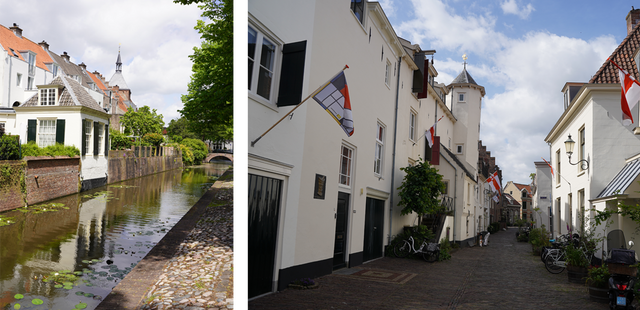You can get great shopping and dangerously good food in Amersfoort. But it is also a historic city. And that can be seen in almost every street. Take the Mondriaankwartier. Here, in addition to the iconic Mondrian House, you'll find a host of historical treasures. From stately buildings, to small works of art hidden in quay walls to a medieval street. Will you join us on an exploration?
Amersfoort colors red, yellow and blue

We begin at the Mondrian House, birthplace of artist Piet Mondrian (1872-1944). After the Mondrian family left, it kind of fell into oblivion that such an extraordinary artist once lived there. Until it was transformed into the Mondrian House and opened to the public. Since then, everyone can get to know better the man behind the abstract forms and primary colors . In 2022 we will celebrate Mondrian's 150th birthday in Amersfoort and therefore a lot of activities will be organized. The whole of Amersfoort will be colored red, yellow and blue!
The cleaner of the fish market

National monument the Vismarkt (1657) can be found at the intersection Kortegracht, Langegracht and Langestraat. Once this spot on the bridge was called Place. But actually it is a hall, with a roof placed on wooden columns and hardstone fish benches underneath. Today, by the way, it has bluestone columns, which come from the benches of the Vishal in Haarlem. In 1856, our fish market was moved to the Lieve Vrouwekerkhof. In 1987 it was temporarily stored and later returned to its current spot in 1988.
Fun fact: in 1651, one Hendricx Leydecker caught an eagle (or red kite, there is disagreement about that) and donated it to the city of Amersfoort. The majestic bird was housed in a so-called "huysgen" (read cage) on the Vismarkt. Presumably this fish lover functioned as a cleaner of fish waste after the market. Pathetic, isn't it?
Gargoyles
If you walk along Kortegracht look down on the quay walls. Here you will find beautiful water spouts. These water spout statues were made by Ton Mooij. They are not only for decoration, but also regulate drainage. In addition, they have a symbolic value; they tell something about the building behind them. On Kortegracht you will find: the Juffergat (no. 21), the Rabbi (near the synagogue) and the Pram (the Mondrian House). There are many more gargoyles to be found in Amersfoort. During a cruise with the Waterline, you can admire them all and hear the stories behind them.
Silent witness

Monumental building Huis Tinnenburg, aka Groot Tinnenburg has an imposing stepped gable. It was probably - after Amersfoort received city rights in 1259 - included in the city wall as a fortification. Not necessarily against outside attackers. No, mainly as a defense against the water from the Heiligenbergerbeek. With the construction of the Monnikendam, the water gate at Tinnenburg became obsolete and was demolished. But House Tinnenburg still stands, as a silent witness from days gone by.
Kei-cute street

Muurhuizenis probably the most famous historic street in Amersfoort. Although street? Feel free to call it a street! The houses together form a large circle along the canals. The medieval wall houses were built around 1500 with the material from the old city wall, which was demolished around 1380 to expand the city. The houses are authentic, all different and kei-cute to see. Fat tip: starting in spring, the many façade gardens that wall houses have are in full bloom.
Besides special pieces of Amersfoort history, you can also do somegreat shopping withgirlfriends,have a nice lunch and taste divine chocolate at Mondriaankwartier. Will you come and have a look too?
